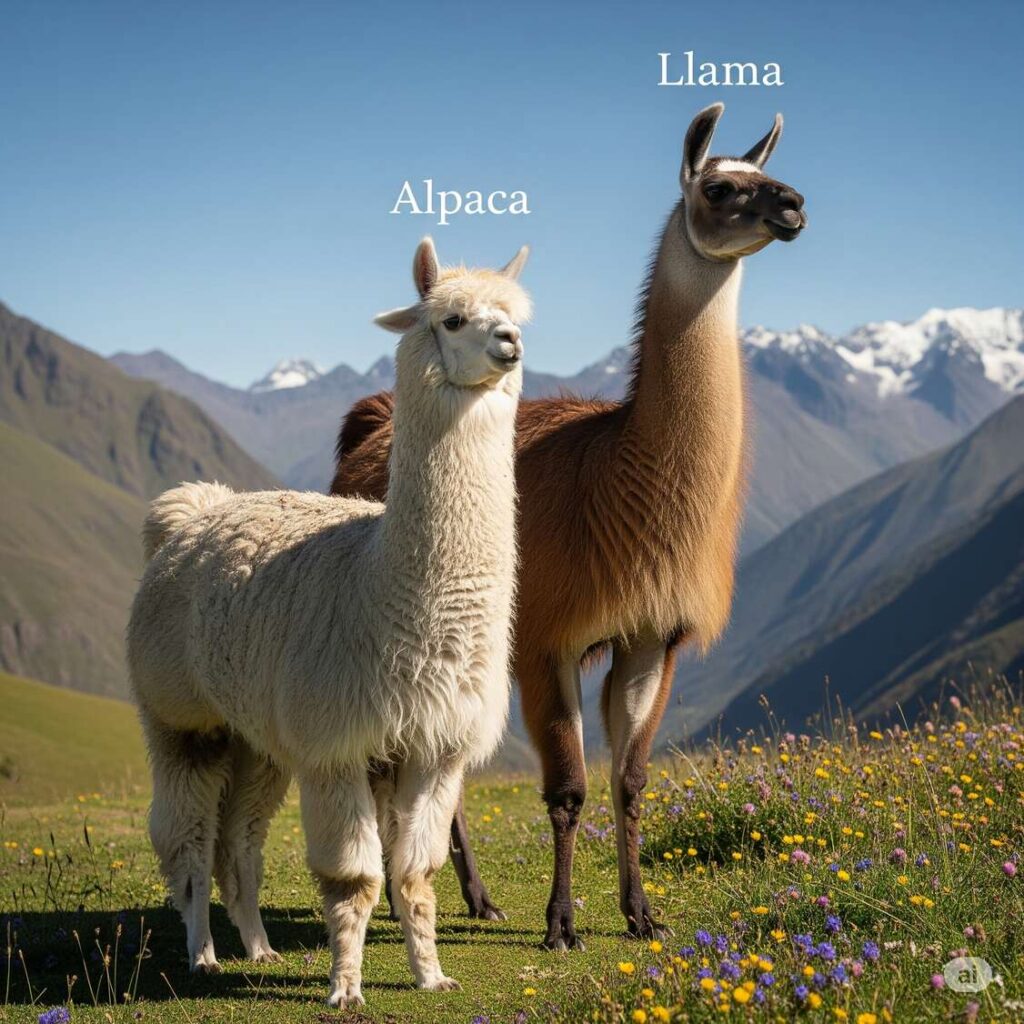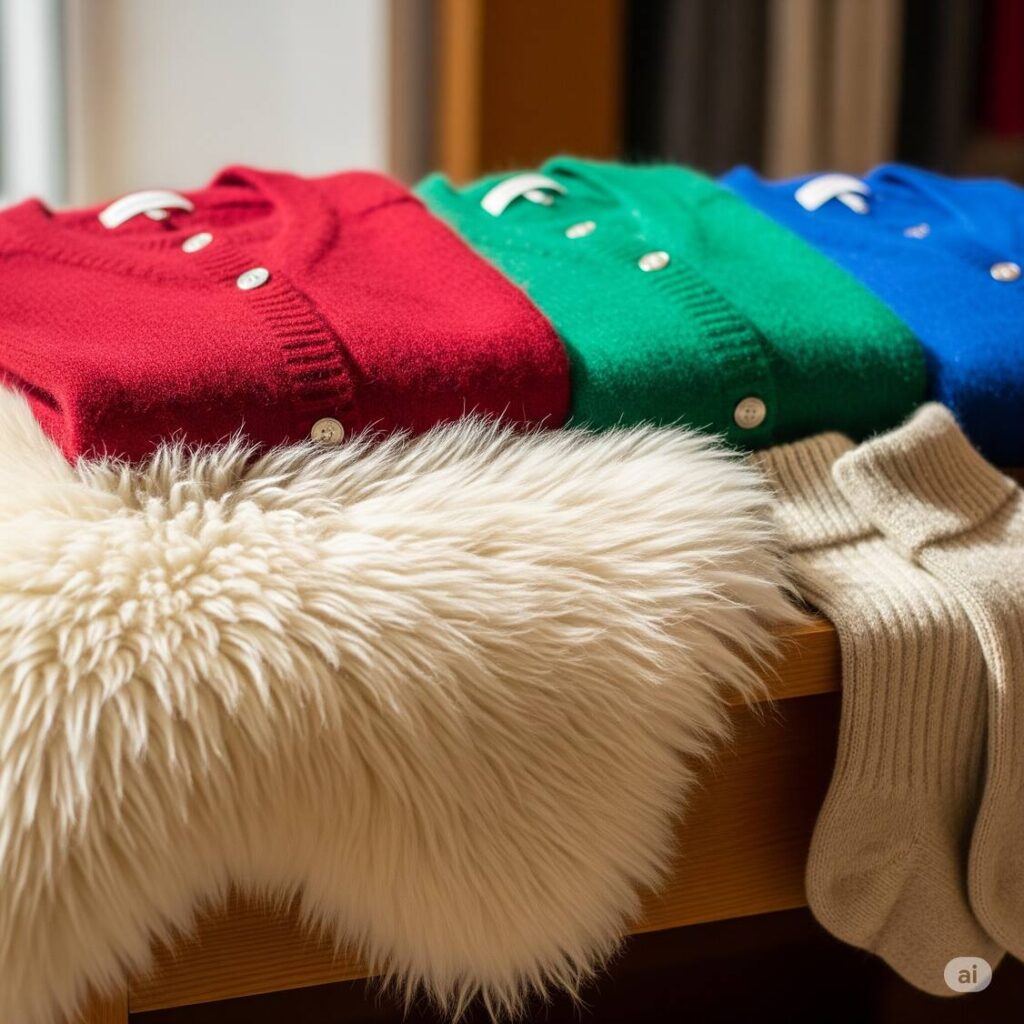Differences Between Alpaca and Llama Wool: Your Ultimate Guide to Coziness and Conscious Style
Ever wondered about the secret behind those incredibly soft, warm sweaters you see gracing high-end boutiques and influencer feeds? Chances are, you’re looking at alpaca. While both alpaca and their larger cousins, llamas, hail from the stunning South American Andes, their fibers tell completely different stories, especially when it comes to what you’d actually want to wear. As someone who lives and breathes alpaca apparel, I’m excited to share the fascinating differences between alpaca and llama wool so you can make truly informed choices for your wardrobe.

The Indulgent Truth: Why Alpaca Feels So Good
Let’s cut to the chase: the moment you touch a genuine alpaca garment, you get it. The first question I often hear is, “what does alpaca wool feel like?” And honestly, “heavenly” is usually the simplest answer. Imagine a softness that rivals cashmere, yet feels lighter, smoother, and utterly delightful against your skin. This brings us right to the heart of what makes alpaca wool luxury? It’s not just about prestige; it’s about the fiber’s unique structure. Alpaca strands are incredibly fine and have a remarkably smooth scale surface, unlike coarser wools. This crucial difference is precisely why alpaca wool doesn’t itch, making it a dream come true for anyone with sensitive skin who usually shies away from wool.
Now, while llamas do produce wool, it’s typically much thicker and coarser. You’ll often find llama wool in more rugged, utilitarian items like sturdy blankets or ropes, not generally in the delicate, next-to-skin garments we crave. And for those seeking the pinnacle of softness, look for “what is baby alpaca yarn?” This isn’t from baby alpacas specifically, but refers to the finest, softest fleece from an alpaca’s very first shearing – it’s truly the crème de la crème of fibers.

Built for Comfort: Alpaca’s All-Weather Performance
Beyond its incredible feel, alpaca wool is a powerhouse when it comes to performance, especially when the weather turns chilly. Its unique hollow-core fibers are absolute champions at trapping air, creating an insulating layer that keeps you wonderfully warm without any unnecessary bulk. This makes it hands-down one of the best natural fibers for cold weather. Llama wool, while offering warmth, simply can’t compete with alpaca’s superior warmth-to-weight ratio; you’d need a much heavier llama garment to get the same cozy effect.
You might also be curious, “is alpaca wool waterproof?” While it won’t repel a torrential downpour like a synthetic raincoat, alpaca is remarkably water-resistant. Its fibers absorb very little moisture and naturally wick away dampness, keeping you comfortable even in light rain or snow. This practical advantage is why you’ll find specialized gear like alpaca wool hiking socks – they’re legendary for keeping feet dry, blister-free, and perfectly warm on the trails. And when winter truly bites, alpaca beanies for cold weather are my top recommendation for staying toasty without the bulk or itch often associated with other winter hats.
A Choice for the Planet: Embracing Alpaca’s Sustainable Side
In today’s world, what we wear extends beyond aesthetics to ethics. So, let’s talk about it: is alpaca clothing sustainable? And I’m thrilled to tell you, yes, it absolutely is! Alpacas are incredibly gentle on their environment. Unlike some livestock with hard hooves that damage pastures, alpacas have soft, padded feet that leave the land largely undisturbed. They also graze by delicately nibbling grass, rather than uprooting it. This kind approach to grazing is a huge part of why alpaca fiber is eco-friendly.
When we look at sustainable winter clothing materials, alpaca stands out for its minimal environmental footprint. It’s naturally biodegradable, requires very little water for processing, and doesn’t need harsh chemicals thanks to being lanolin-free. Furthermore, if you’re weighing alpaca vs cashmere sustainability, alpaca is the clear winner. Cashmere production has unfortunately led to severe land degradation in some regions due to overgrazing. Alpaca farming, by contrast, supports more harmonious land management, making it a truly responsible and conscious choice.
Style that Endures: Alpaca in the Fashion World
Alpaca isn’t just about comfort and conscience; it’s a statement of sophisticated style. Looking ahead, alpaca fashion trends 2025 are all about embracing natural textures, timeless designs, and an effortless elegance. We’re seeing luxury alpaca fashion trends showcasing minimalist lines and versatile pieces that speak to an enduring sense of style. If you’re a fan of minimalist fashion with alpaca, you’ll adore how these pieces seamlessly integrate into a chic, understated wardrobe, transcending fleeting fads.
It’s no surprise that fashion influencers wearing alpaca are popping up all over our social feeds, highlighting its versatility and sophisticated appeal. Alpaca is truly at the forefront of natural fiber fashion for 2025, proving that you don’t have to compromise on style for sustainability. And while alpaca is certainly modern, it also carries a rich legacy. Just think of the vibrant Peruvian alpaca clothing traditions that have celebrated this fiber for centuries, weaving stories of heritage and artistry into every piece. While llama wool has its place in traditional, more rustic textiles, alpaca has always been reserved for garments of greater prestige and artistry due to its superior fineness.

Preserving Your Investment: Care and Sourcing Your Alpaca Treasures
Bringing alpaca into your life is an investment in quality that, with proper care, will last for years. So, how to wash alpaca wool clothing? It’s simpler than you might think! Most alpaca garments prefer a gentle hand wash in cool water with a mild detergent, followed by careful reshaping and air-drying flat. Learning how to care for alpaca wool correctly ensures your pieces maintain their incredible softness and form for decades, becoming cherished heirlooms.
Ready to find your perfect alpaca piece? If you’re wondering where to buy alpaca clothing, you’ll discover a wonderful array of specialized boutiques and online stores. For truly unique finds, exploring handmade alpaca garments online can lead you to exquisite, artisanal creations, often directly supporting the talented communities that craft them. And for a savvy purchase, keep an eye out for alpaca wool Black Friday deals – it’s a fantastic opportunity to invest in these luxurious items. When you’re searching where to find alpaca garments online, look for retailers known for ethical sourcing and transparent production.
In essence, while llama wool offers its own merits, the striking differences between alpaca and llama wool undeniably position alpaca as the superior fiber for luxurious, comfortable, and ethically produced clothing. Choosing alpaca isn’t just about selecting a beautiful material; it’s a conscious decision that aligns with both personal comfort and a deeper commitment to our planet.




